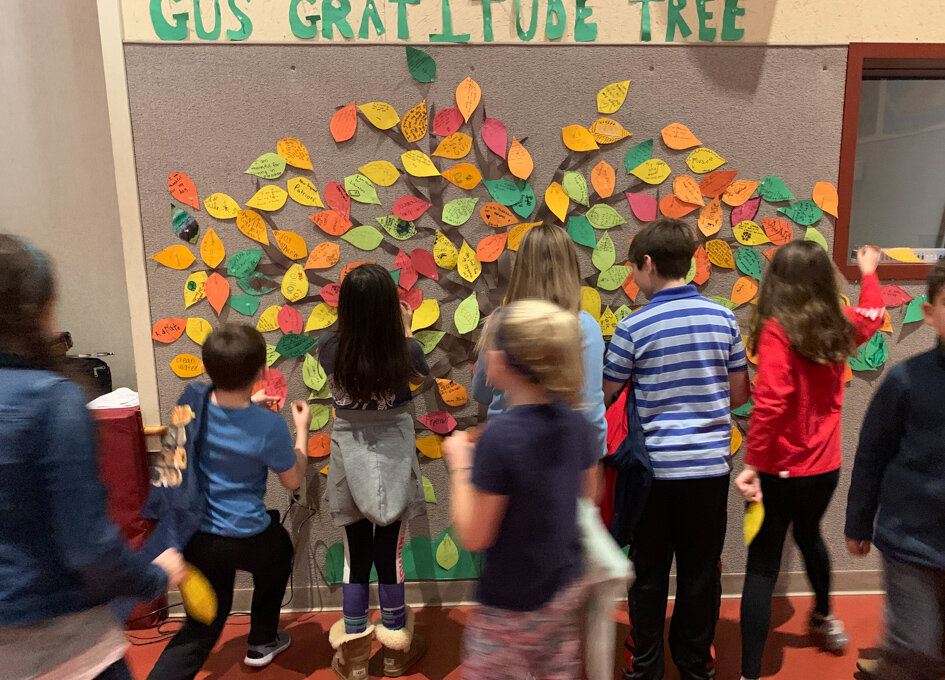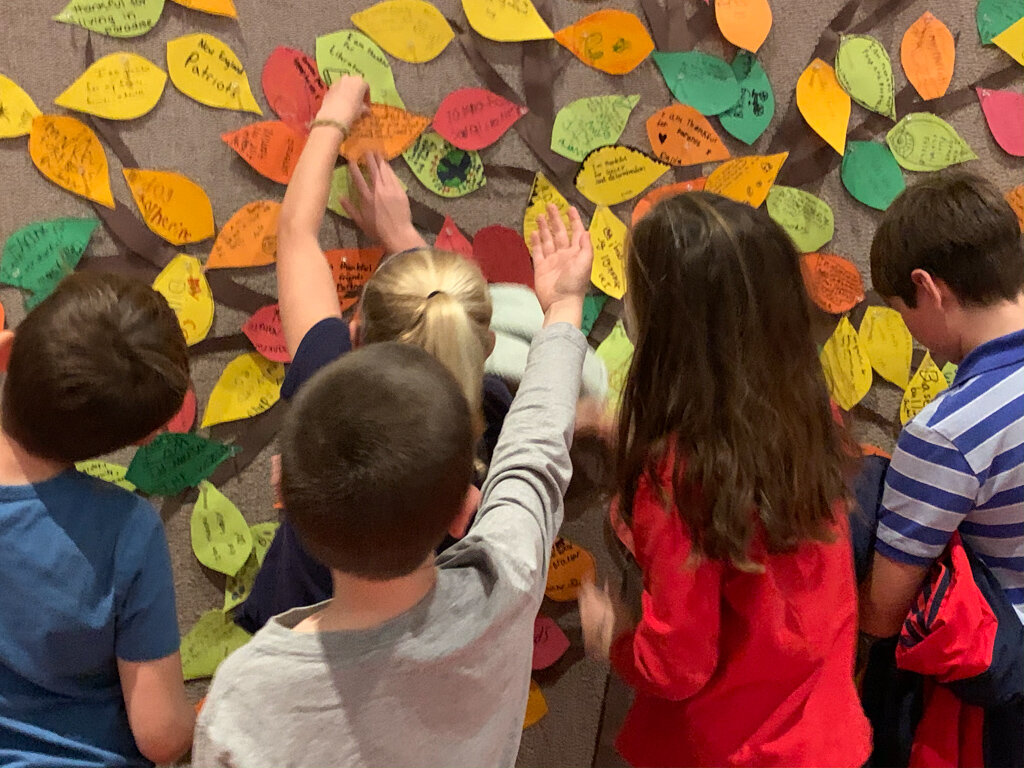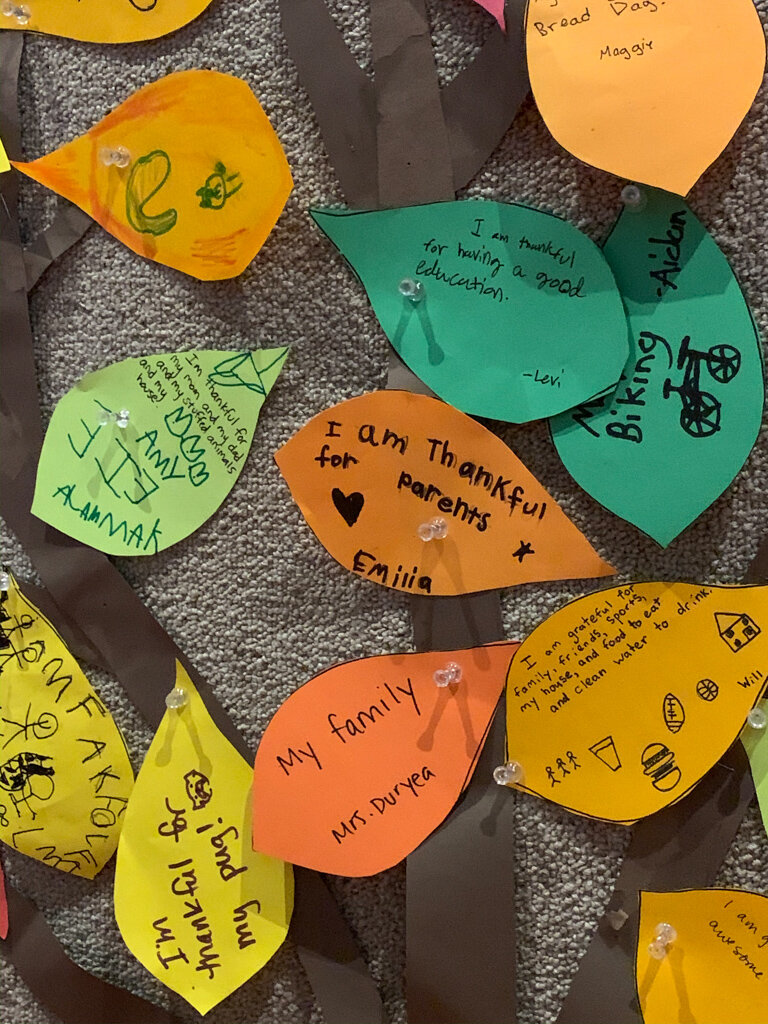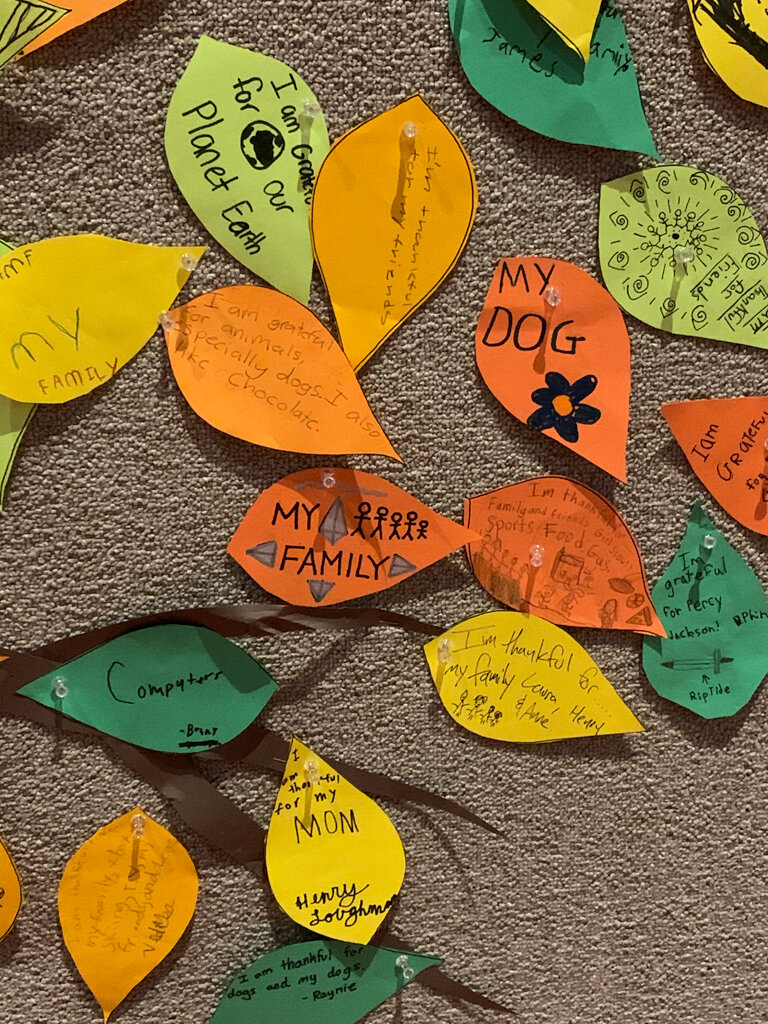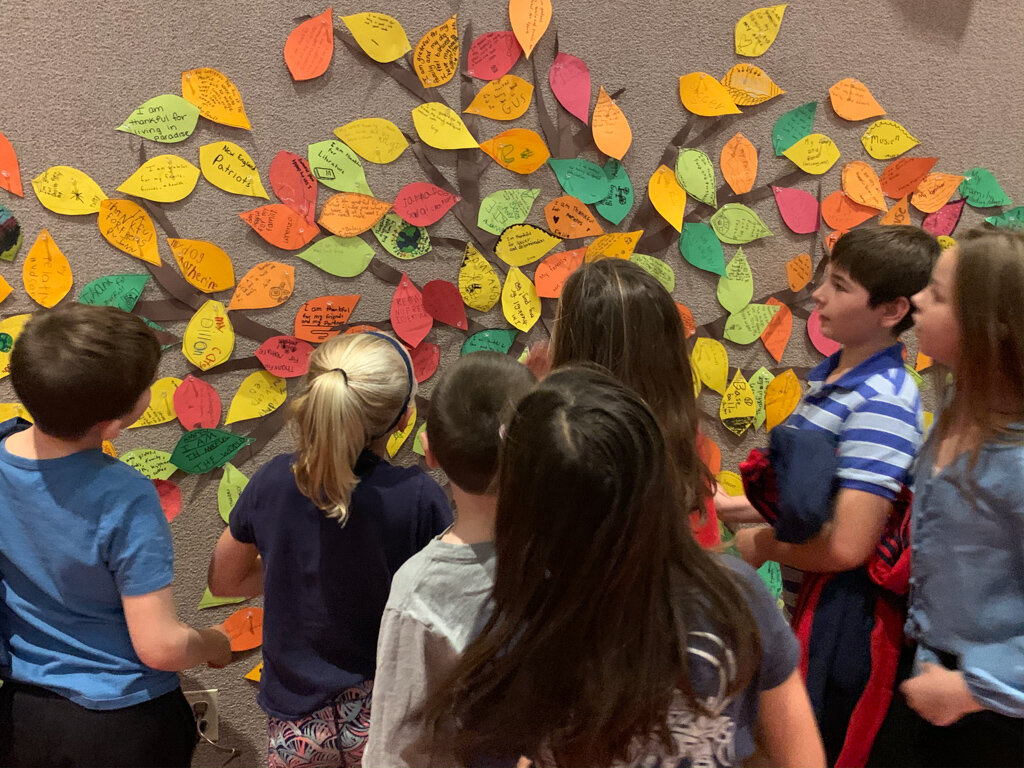Gratitude, For More Than Just the Holidays
“What are you grateful for?,” I ask a group of third graders. “My family!” “For friends!” “For my dog!” Three children loudly and joyfully respond. During this season of thanks, many of us take time to ponder not only what we are thankful for, but also, what role gratitude plays in our lives. As educators, we think a lot about the role gratitude plays in child development. While it may seem obvious at this time of year to talk about what we are thankful for, the effects of a regular gratitude practice are significant and worth revisiting. The joy in the third graders’ response to my initial question is not by chance. Individuals who practice gratitude regularly are not only more resilient but also generally happier and kinder. As a result, gratitude has become a deliberate part of our GUS program.
Gratitude helps us see the glass as half full, improving our ability to weather difficulties. In second grade, teachers encourage students that are having a bad day to take a moment and think of something they are grateful for as a way to offer perspective. Throughout the day students are reminded to focus on the small things that are going well, and, at the end of the day, students share one thing to help focus on the positive. Finding the good in all situations and learning to appreciate the things we have keeps spirits up and hopes high.
When students give attention to the positive, they feel better and are more likely to be generous and offer gratitude and appreciation to others. While gratitude focuses on what we have and feel as individuals, empathy, its counterpart, allows us to understand and share the feelings of others. The two go hand in hand. Holiday service projects like toy drives and volunteering at food pantries not only help to build empathy, but also build an appreciation for all that we have. Our annual second grade food drive for Beverly Bootstraps is going on now through December 4. If you haven’t already, I hope you will consider donating an item.
Gratitude is also about community, and the classroom is the perfect community to promote and model gratitude. Expressing gratitude cultivates our friendships and deepens the connections we have with each other. In seventh grade, students celebrate “thankful Thursday” each week. Some weeks they go around and share, other times they watch a video meant to inspire, or maybe they create gratitude flags to share with the greater community important things to them. This simple act once a week brings the students and teachers together in a meaningful way. At our Bread Day assembly today, students were asked to contribute a leaf to our Gratitude Tree - an idea inspired by faculty members in our mindfulness professional learning group, and brought to life by the second grade with contributions from the entire school community. The tree will live outside my office for the month of December, so please stop by to see it in person!
We don’t need to wait for a big event to share our thanks. Many classes have gratitude boxes where students and teachers alike can write down what they are grateful for. Students have written about simple things like a smile, a hug, the nature trail, friends, family, teachers, and GUS. Even our Parents Association is helping to promote gratitude! Each entry in the ‘Be the Change’ boxes is an expression of thanks for an act of kindness. Saying please and thank you and recognizing the good in others are little things that go a long way in building community.
When we take pause each day to breathe and find some appreciation and gratitude for the little things, we are more optimistic, less stressed and more grounded. While we are helping our students put this practice into place at school, there are many ways that families can encourage this practice at home. Maybe it’s a gratitude box, or maybe it’s a different practice. Before dinner, on Thanksgiving, or every night, have everyone say something they are grateful for. This is a great way to model gratitude and to reap the benefits of a regular practice. We also suggest starting a gratitude journal, for your child or yourself, and end every day by sharing three things you are grateful for. Not only will your child be happier, but they will also be more resilient, more empathetic, and a stronger community member.
This holiday season, think about donating coats, food, or buying gifts for those less fortunate. This will also help young people understand all that they have. Here at school, we will do our part. Reminding students to focus on the positive, valuing each other as community members, and sharing our thanks regularly. Young people with big hearts, who appreciate opportunities and respect life’s gifts, who value the positive even when faced with hardship, is there anything more we could want for our children?
And while I have the opportunity, I would like to express my appreciation for the GUS community. From teachers who put their hearts and souls into their work to students who inspire me with their enthusiasm for learning, from families who partner with us to do what is best for these young people to alumni who return to brighten our days, Glen Urquhart School is a special place. Here at GUS, there is so much to be grateful for, today and always.
Trust and Go Forward,
Gretchen Forsyth
Interim Head of School

